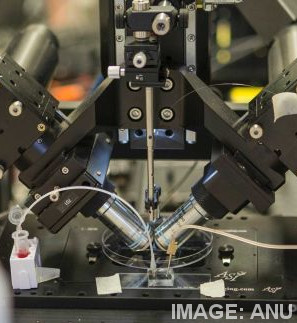Clot spotter could save lives
 Australian engineers have created a new imaging device that could function as an alarm for stroke or heart attack.
Australian engineers have created a new imaging device that could function as an alarm for stroke or heart attack.
The device can create and quantify clot formation in 3D view from a blood sample without any form of labelling such as fluorescence or radiotracer – something that had been impossible to achieve until now.
Currently, doctors treat people at risk of heart attack or stroke with blood-thinning medication, but have no way to know a patient's susceptibility with precision.
“We can apply this technology to blood from patients at risk of clotting or uncontrollable bleeding - this is a potential gamechanger,” says biochemist Associate Professor Elizabeth Gardiner
The device creates a digital hologram of a microscopic blood clot at a fraction of a second by measuring the delay time for light to travel through the clot.
In tests so far, the team has tailored a microfabricated device that can mimic a damaged blood vessel and created blood clots from human samples to reveal these blood-clotting events in the laboratory.
The device can be fitted onto a regular microscope.
Researcher Dr Samantha Montague said the device would be further developed in tandem with existing clinical and platelet research practices.








 Print
Print